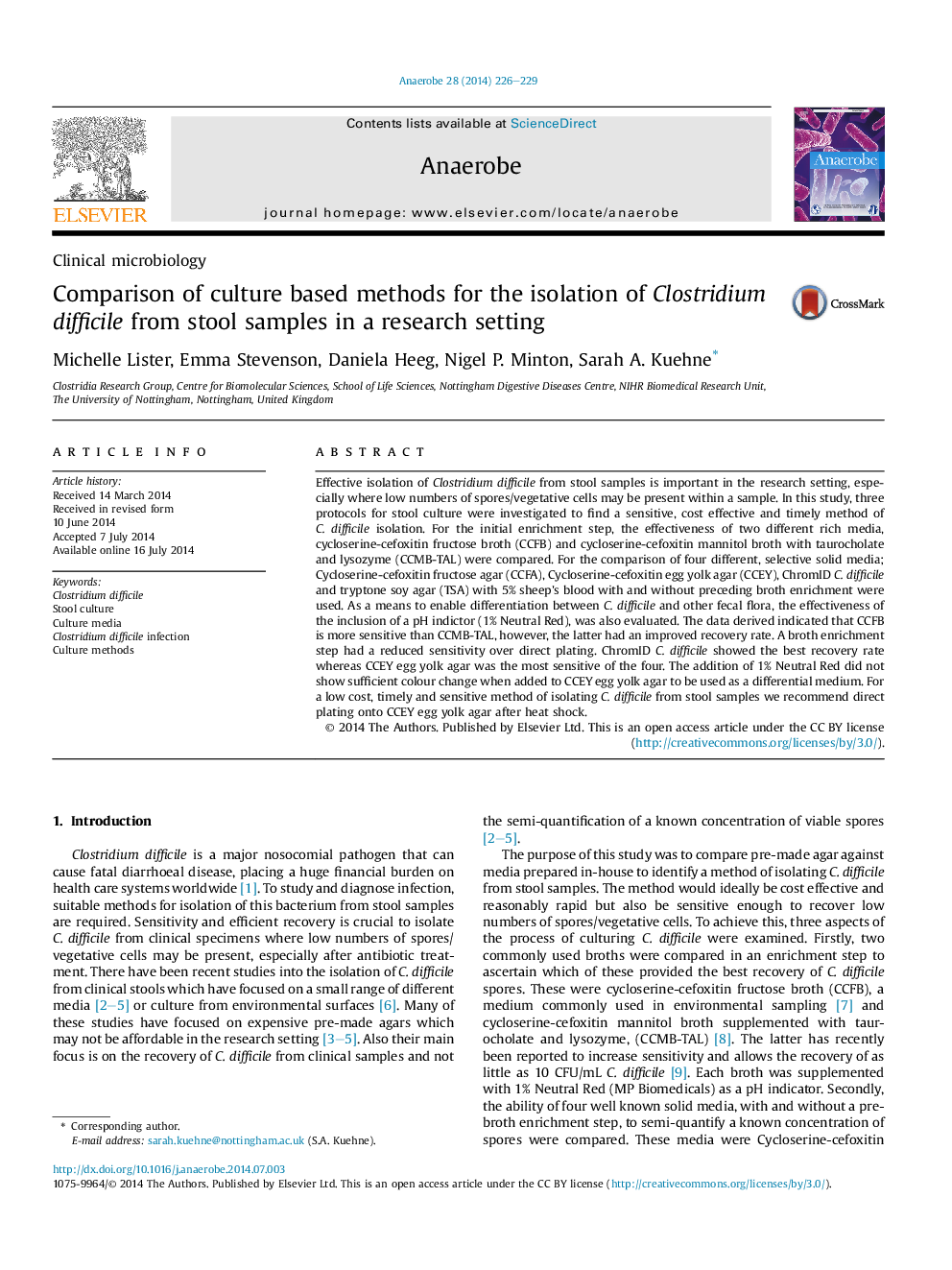| Article ID | Journal | Published Year | Pages | File Type |
|---|---|---|---|---|
| 6128699 | Anaerobe | 2014 | 4 Pages |
Abstract
Effective isolation of Clostridium difficile from stool samples is important in the research setting, especially where low numbers of spores/vegetative cells may be present within a sample. In this study, three protocols for stool culture were investigated to find a sensitive, cost effective and timely method of C. difficile isolation. For the initial enrichment step, the effectiveness of two different rich media, cycloserine-cefoxitin fructose broth (CCFB) and cycloserine-cefoxitin mannitol broth with taurocholate and lysozyme (CCMB-TAL) were compared. For the comparison of four different, selective solid media; Cycloserine-cefoxitin fructose agar (CCFA), Cycloserine-cefoxitin egg yolk agar (CCEY), ChromID C. difficile and tryptone soy agar (TSA) with 5% sheep's blood with and without preceding broth enrichment were used. As a means to enable differentiation between C. difficile and other fecal flora, the effectiveness of the inclusion of a pH indictor (1% Neutral Red), was also evaluated. The data derived indicated that CCFB is more sensitive than CCMB-TAL, however, the latter had an improved recovery rate. A broth enrichment step had a reduced sensitivity over direct plating. ChromID C. difficile showed the best recovery rate whereas CCEY egg yolk agar was the most sensitive of the four. The addition of 1% Neutral Red did not show sufficient colour change when added to CCEY egg yolk agar to be used as a differential medium. For a low cost, timely and sensitive method of isolating C. difficile from stool samples we recommend direct plating onto CCEY egg yolk agar after heat shock.
Keywords
Related Topics
Life Sciences
Immunology and Microbiology
Microbiology
Authors
Michelle Lister, Emma Stevenson, Daniela Heeg, Nigel P. Minton, Sarah A. Kuehne,
